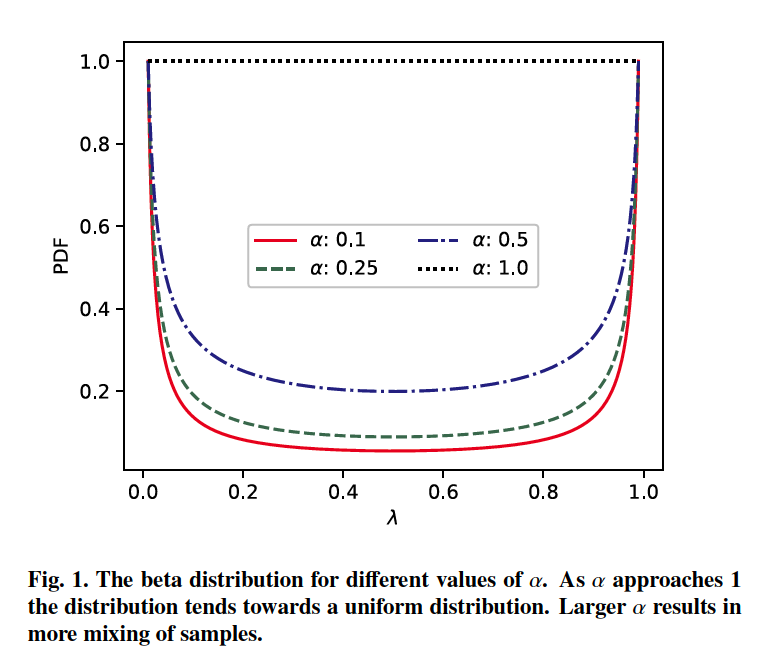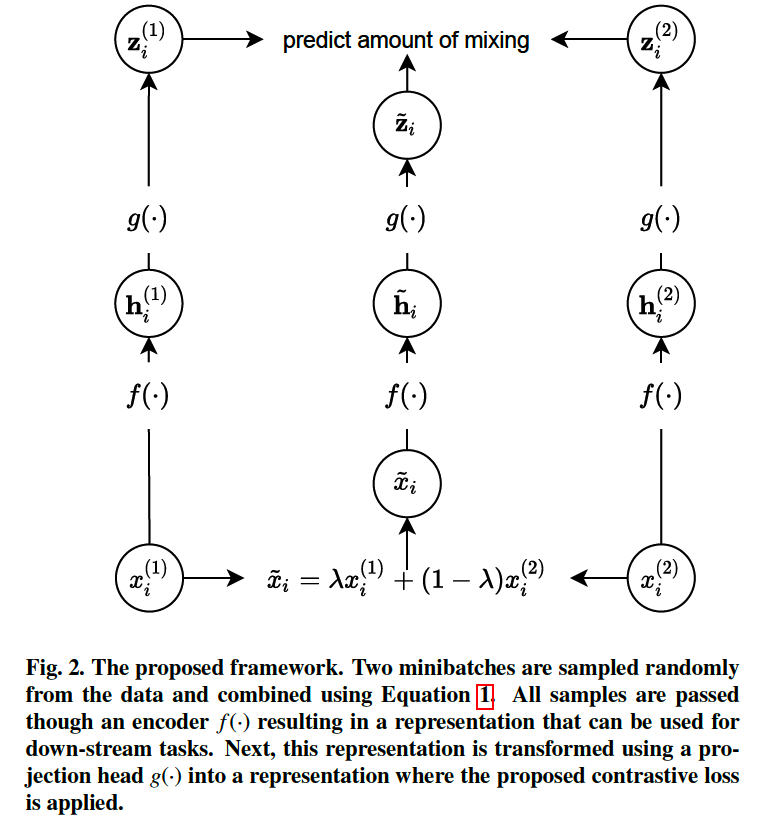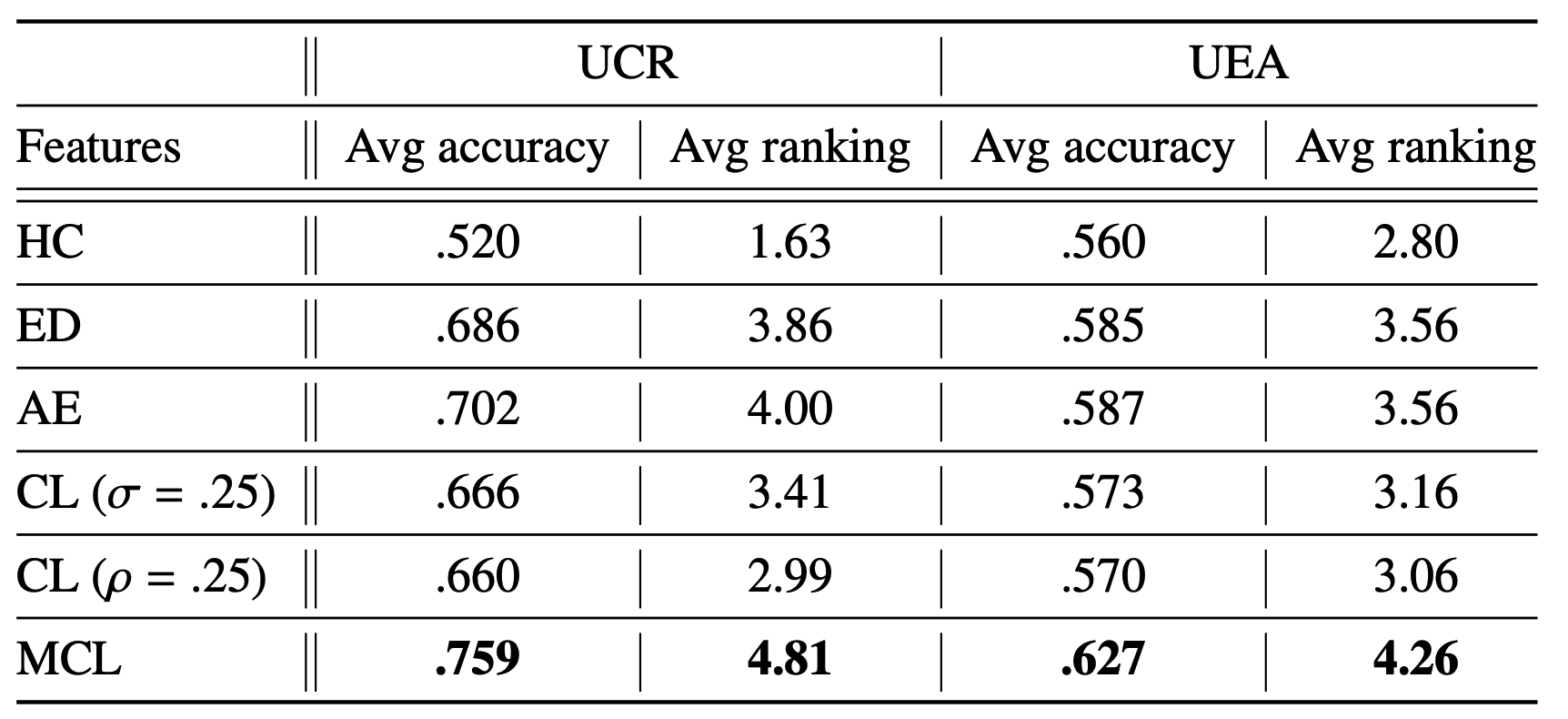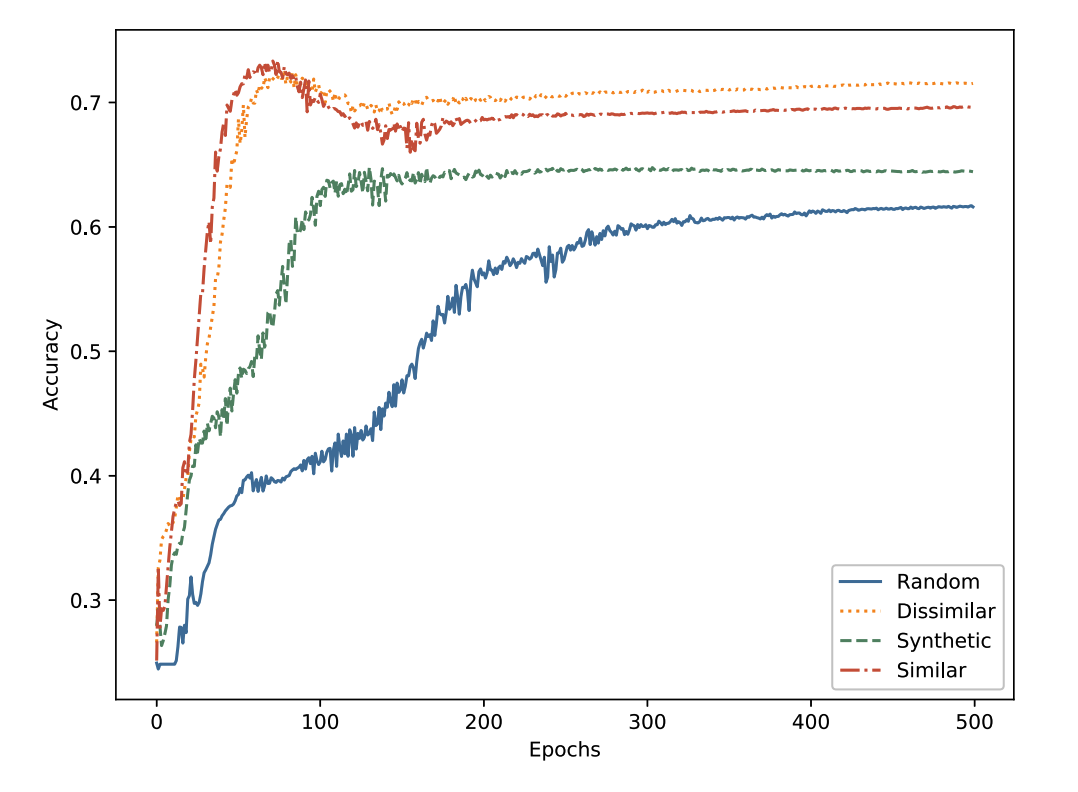Mixing Up Contrastive Learning: Self-Supervised Representation Learning for Time Series
Contents
- Abstract
- Introduction
- Method
- Training on labeled data
- Training on unlabeled data
- Experiments
0. Abstract
propose an unsupervised CL
-
motivated from the perspective of label smoothing
-
uses a novel contrastive loss,
that naturally exploits a data augmentation scheme
in which new samples are generated by mixing two data samples
-
task : predict the mixing component
- utilized as soft targets in the loss function
1. Introduction
introduces a novel SSL, that exploits “mixup”
mixup data augmentation
-
creates an augmented sample,
-
through a convex combination of 2 data points
\(\rightarrow\) allows for generation of new data points ( = augmented samples )
Task :
-
predict the strength of the mixing component
-
based on the “2 data points” and the “augmented sample”
( motivated by label smoothing )
Label Smoothing
- has been shown to increase performance & reduce overconfidence
Datasets :
- UCR (Dau et al., 2018)
- UEA (Bagnall et al., 2018)
2. Mixup Contrastive Learning
CL for TS
-
propose a new contrastive loss,
that exploits the information from the data augmentation procedure.
Notation
-
( also applicable to MTS, but introduce with UTS )
-
UTS : \(x=\{x(t) \in \mathbb{R} \mid t=1,2, \cdots, T\}\)
( vectorial data : \(\mathbf{x}\) )
Data Augmentation ( for TS )
-
potential invariances of TS are rarely known in advance
-
In this work ….
\(\rightarrow\) data augmentation based on mixup
Mixup
- 2 time series \(x_i\) and \(x_j\) drawn randomly
- augmented training example : \(\tilde{x}=\lambda x_i+(1-\lambda) x_j\)
- \(\lambda \in[0,1]\) …. \(\lambda \sim \operatorname{Beta}(\alpha, \alpha)\) and \(\alpha \in(0, \infty)\)

(1) A Novel Contrastive Loss for Unsupervised Representation Learning of TS
Procedure

At each training iteration…
-
\(\lambda\) is drawn randomly ( from a beta distn )
- 2 mini- batches of size \(N\) are drawn ( from training data )
- \(\left\{x_1^{(1)}, \cdots, x_N^{(1)}\right\}\) .
- \(\left\{x_1^{(2)}, \cdots, x_N^{(2)}\right\}\).
- create new mini-batch of augmented samples :
- \(\left\{\tilde{x}_1, \cdots, \tilde{x}_N\right\}\).
- 3 minibatches are passed through the encoder, \(f(\cdot)\)
- \(\left\{\mathbf{h}_1^{(1)}, \cdots, \mathbf{h}_N^{(1)}\right\},\left\{\mathbf{h}_1^{(2)}, \cdots, \mathbf{h}_N^{(2)}\right\}\), and \(\left\{\tilde{\mathbf{h}}_1, \cdots, \tilde{\mathbf{h}}_N\right\}\)
- new representations are again transformed into a task dependent representation ( by projection head \(g(\cdot)\) )
- \(\left\{\mathbf{z}_1^{(1)}, \cdots, \mathbf{z}_N^{(1)}\right\},\left\{\mathbf{z}_1^{(2)}, \cdots, \mathbf{z}_N^{(2)}\right\}\), and \(\left\{\tilde{\mathbf{z}}_1, \cdots, \tilde{\mathbf{z}}_N\right\}\),
- contrastive loss is applied.
Proposed Contrastive Loss
MNTXent loss (the mixup normalized temperature-scaled cross entropy loss)
( for a single instance )
\(l_i=-\lambda \log \frac{\exp \left(\frac{D_C\left(\tilde{\boldsymbol{z}}_i, \mathbf{I}_i^{(1)}\right)}{\tau}\right)}{\sum_{k=1}^N\left(\exp \left(\frac{D_C\left(\tilde{z}_i,,_k^{(1)}\right)}{\tau}\right)+\exp \left(\frac{D_C\left(\tilde{\mathbf{z}}_i, \mathbf{l}_k^{(2)}\right)}{\tau}\right)\right)}\) \(-(1-\lambda) \log \frac{\exp \left(\frac{D_C\left(\tilde{\tilde{z}}_i, \mathbf{I}_i^{(2)}\right)}{\tau}\right)}{\sum_{k=1}^N\left(\exp \left(\frac{D_C\left(\tilde{z}_i,,_k^{(1)}\right)}{\tau}\right)+\exp \left(\frac{D_c\left(\tilde{(}_i, \boldsymbol{L}_k^{(2)}\right)}{\tau}\right)\right)}\),
- \(D_C(\cdot)\) : cosine similarity
- \(\tau\) : temperature parameter
( original ) identifying the positive pair of samples
( proposed ) predicting the amount of mixing
- ( + discourage overconfidence … since the model is tasked with predicting the mixing factor instead of a hard 0 or 1 decision )
3. Experiments
(1) test on both UTS and MTS dataset
- UCR archive (Dau et al., 2018) : 128 UTS datasets
- UEA archive (Bagnall et al., 2018) : 30 MTS datasets
(2) enables transfer learning in clinical time series
(1) Evaluating Quality of REPRESENTATION
Training a simple classifier on the learned representation
-
use a 1-nearest-neighbor (1NN) cos
-
requires no training and minimal hyperparameter tuni
a) Architecture
- Encoder \(f\) : FCN (Fully Convolutional Network)
- ( for all contastive learning approaches )
- Representation : output of the average pooling layer
- Projection head \(g\) : 2 layer NN
- 128 neurons in each layer & ReLU
b) Others
- Adam Optimzier / 1000 epochs
- temperature parameter \(\tau\) : 0.5
- \(\alpha\) : 0.2
Accuracy & Ranking ( with 1-NN cls )
average across 5 training runs at the last epoch

Accuracy ( scatter plot )
- diagonal = similar performance

Accuracy ( box plot )
- of UCR & UEA datasets

(2) Transfer Learning for clinical TS
Settings
- (1) classification of echocardiograms (ECGs) datasets
- (2) with limited datasets
Process
- step 1) train an encoder
- using MCL ( self-supervised pretext task )
- pretext task datasets ( from UCR ) :
- Syntehetic Control (Synthetic)
- Swedish Leaf (Dissimilar)
- ECG5000 (Similar)
- step 2) Initialize with pre-trained weights
- ( encoder architecture : FCN )
Accuracy
- Baseline : random initializatiion
- Proposed : 3 datasets
- ( \(N\) : number of training samples )

Accuracy ( by Epochs )

